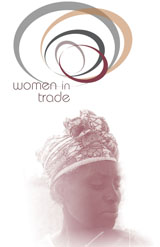
International Women抯 Day
The WTO celebrates the Centenary of International Women's Day on 8 March 2011 to commemorate the past, present and future economic, political and social achievements of women around the world.
See also:
> International Women's Day web site
On the occasion of International Women抯 Day on 8 March 2011, Director-General Pascal Lamy underlined that 搃n many countries, woman-owned businesses represent the fastest growing segment of the workforce. ?As the businesses these women create mature, they will look for opportunities beyond their borders and the world trading system needs to ensure that women entrepreneurs have every chance to seize these opportunities.?O:P>
> Download (right-click and select “Save as” to download and view offline) Quality: > help
Women in Trade: Tasting
Competitiveness in Global Markets
On 8 March the WTO and the International Trade Centre jointly organized an event focusing on women in trade to celebrate International Women's Day. The programme included an opening address by Pascal Lamy and speeches by Sandrine Salerno, Mayor of Geneva, and Jean-Marie Paugam, Deputy Executive Director of the ITC. The event ended with a coffee-tasting opportunity for all participants.
![]() Audio:
Audio:
> Opening address by Pascal Lamy
> Keynote
address by Sandrine Salerno, Mayor of Geneva
> Keynote
address by Jean-Marie Paugam, Deputy Executive Director ITC
> help
![]()
Related material
Public forum sessions
2010
> Doing it differently: Reshaping the global economy
2008
>
South-South Cooperation and
Regional Integration: A Gender Perspective
2006
> Equitable trade: creating a level playing field for men and women
Working paper (2003)
> Is trade liberalization a window of opportunity for women?
?Women account for 70% of the world’s poor (ITC, “Empowering women, powering trade”, 2010).
?Women comprise between 53% and 90% of the employed in most export sectors in middle-income developing countries. This highlights that trade may be creating new opportunities for women in the developing world (OECD, “Trade and gender: issues and interactions”, 2005).
• Out of the 3 billion people who were employed around the world in 2008, 1.2 billion are women (ILO, “Global employment trends for women”, 2009).
• The services sector now provides the majority of female jobs whereas ten years ago agriculture was the main employer of women (ILO, “Global employment trends for women”, 2009).
• Women own 1% of world’s wealth, have a 10% share in global income and occupy 14% of leadership positions in the private and public sector (ITC, “Empowering women, powering trade”, 2010).
• Women produce between 60% and 80% of the food in poorer countries and grow half of the world’s food overall (FAO).
